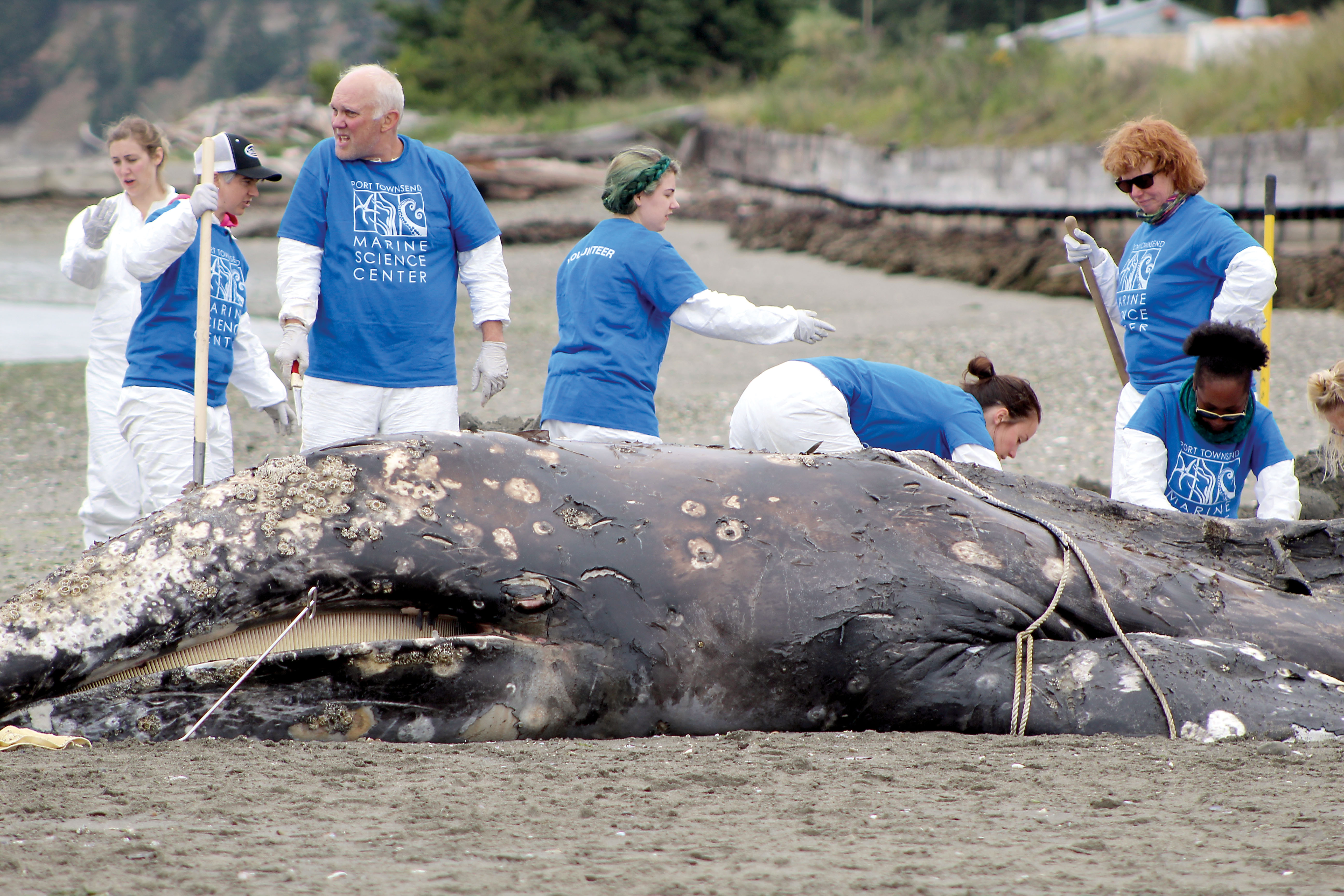PORT TOWNSEND — A juvenile gray whale found dead near Seattle earlier this month has been submerged off Indian Island so natural predators will clean the massive carcass and provide an educational tool for the Port Townsend Marine Science Center.
The process is being conducted under the auspices of the marine science center and could take up to 10 years, according to marketing and development coordinator Alison Riley.
“We already have kids coming out here for hands-on projects,” Riley said.
“When I was in school, I didn’t get a chance to learn how long it would take for a whale to decompose underwater, examine or assemble a skeleton, or study a necropsy to determine the cause of death.”
The animal, a female between the age of 2 and 4, was first sighted alive in late April in central Puget Sound having difficulty swimming and diving as a result of trapped gases in the upper part of its body.
Biologists and veterinarians suspected the whale might have been suffering from an infection that produced gas inside its body or a pneumothorax — a collapsed lung — that had filled its chest cavity with air.
Found dead
On May 8, the whale, identified as CRC-1524, was found dead in Elliott Bay near downtown Seattle.
Cascadia Research Collective and the state Department of Natural Resources towed the whale’s carcass May 11 to a site on Indian Island provided by the U.S. Navy for the necropsy.
Marine science center staff, volunteers and AmeriCorps members assisted in the necropsy, the results of which will help NOAA Fisheries understand the whale’s injuries and the cause of death, which could provide insight into the health risks affecting gray whales.
After the necropsy, the 30-foot, 30,000-pound mammal was placed in fine netting before being anchored underwater, with the intention that crabs, fish and other predators will eat away the flesh and cartilage, after which time the bones will be studied, reassembled and used in the center’s classes and exhibits, Riley said.
The animal’s pectoral fins were submerged in an area adjacent to the marine science center pier to be observed using submersible vehicles.
The fins’ decomposition will serve as a guide as to how long it will take the carcass to become a skeleton, Riley said.
The animal has not been named, Riley said, as students working on the project will provide an appropriate moniker.
Orca burial
This resembles the process used for Hope, a female orca who washed up on Dungeness Spit in 2002.
Hope was not submerged in the water; her decomposition was accomplished with burial in manure.
Once the skeleton was acquired, it was cleaned, reassembled and put on display at the marine science center museum at Fort Worden State Park.
The time elapsed between Hope’s discovery and the exhibit opening extended to 10 years, which Riley said will probably be about the same as that for the gray whale.
Sometime during the process, the center will need to acquire more space for the eventual skeletal display, Riley said.
For more information, go to www.ptmsc.org.
__________
Jefferson County Editor Charlie Bermant can be reached at 360-385-2335 or cbermant@peninsuladailynews.com.
